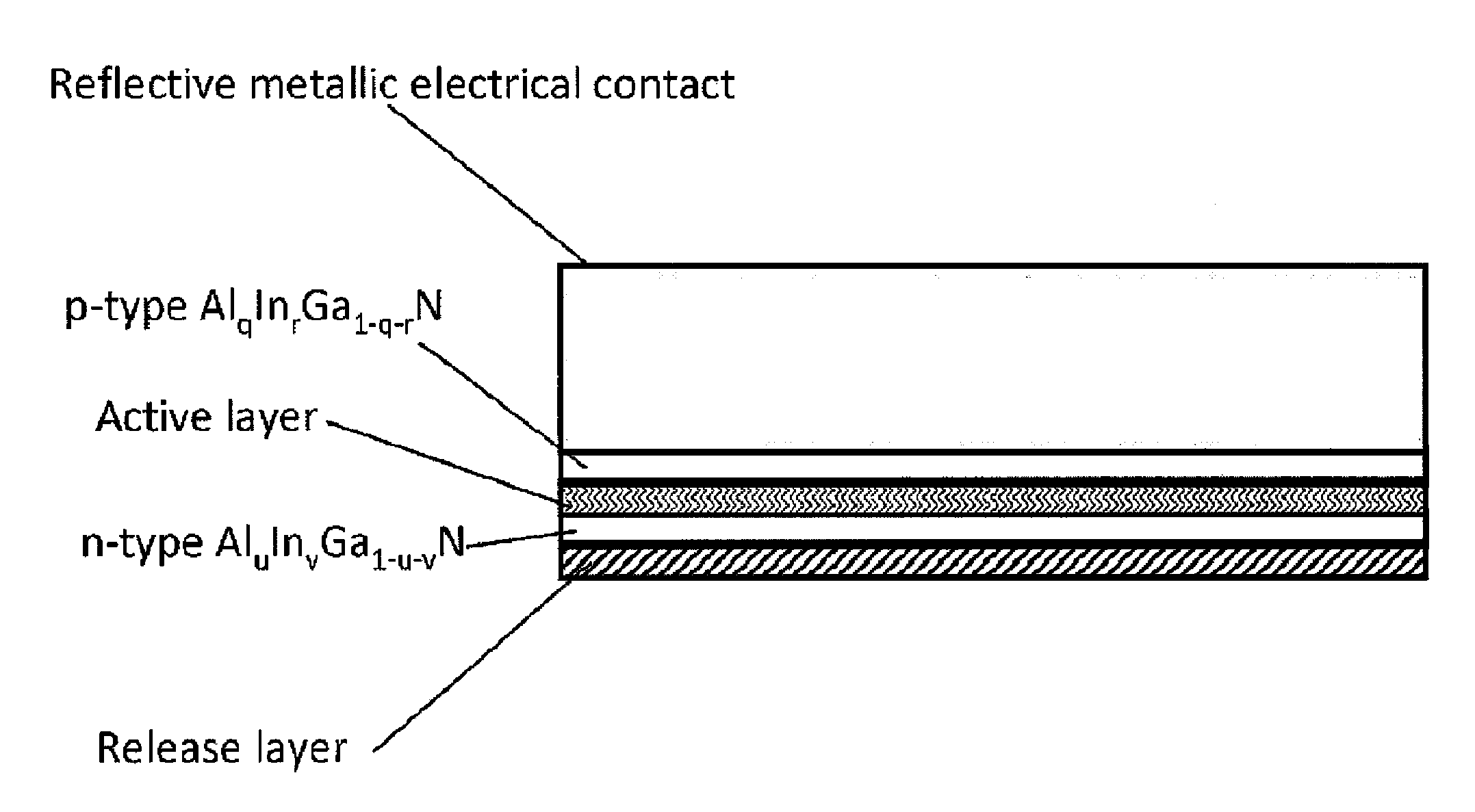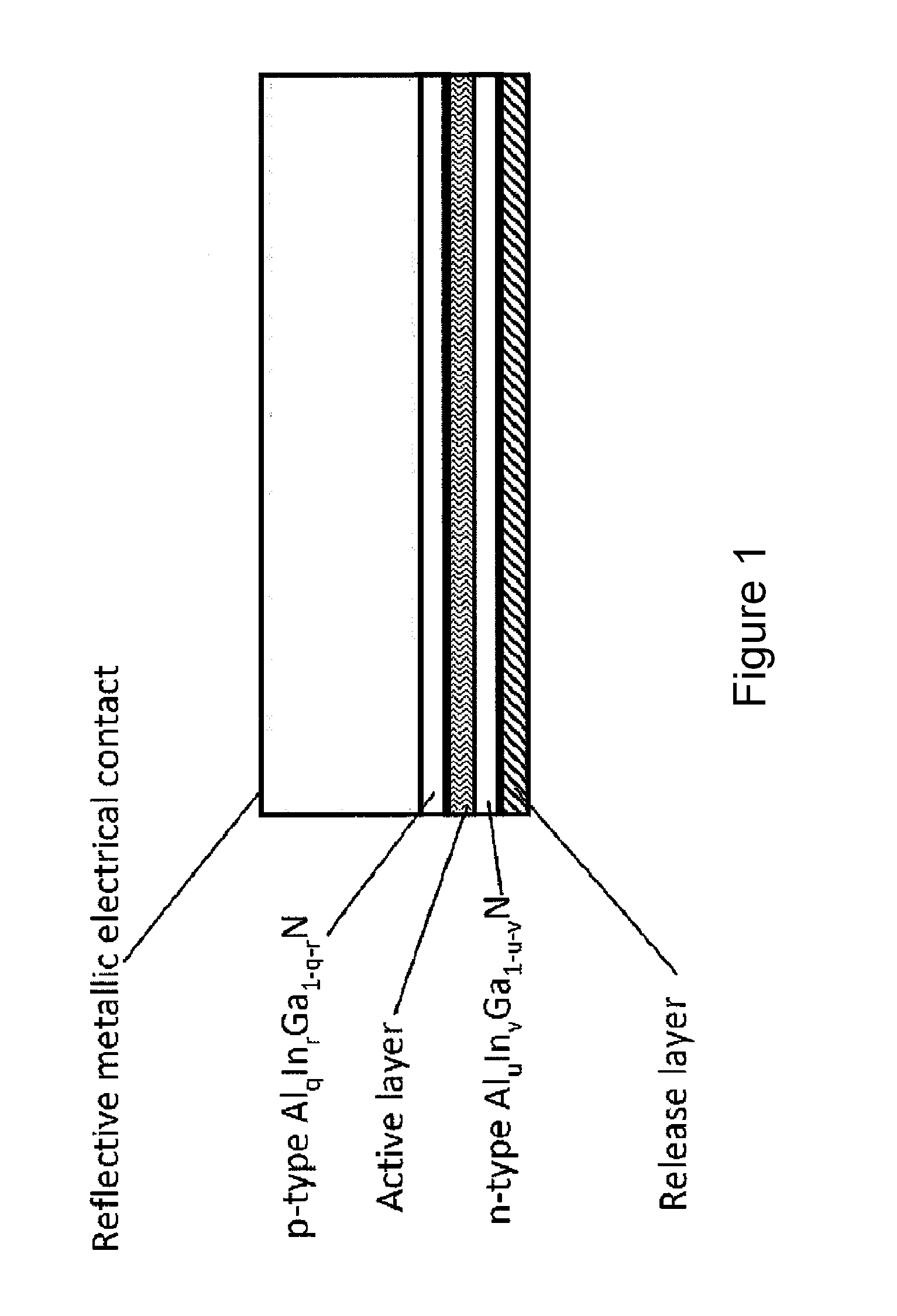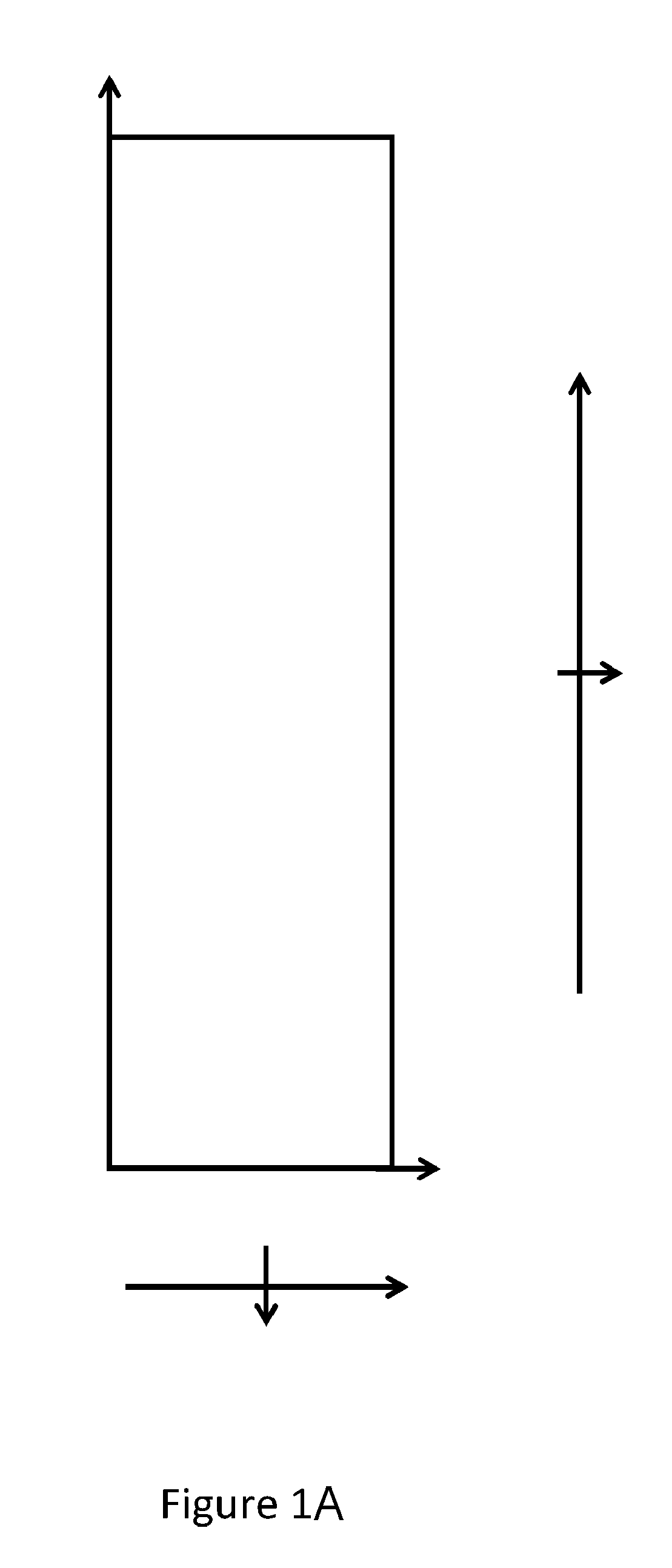Polarization Direction of Optical Devices Using Selected Spatial Configurations
a spatial configuration and optical device technology, applied in the field of lighting techniques, can solve the problems of routine failure of conventional light bulbs, and inability to detect the direction of optical devices using selected spatial configurations, etc., to achieve the effect of easy detection for handling and often higher system efficiency
- Summary
- Abstract
- Description
- Claims
- Application Information
AI Technical Summary
Benefits of technology
Problems solved by technology
Method used
Image
Examples
Embodiment Construction
[0029]According to the present invention, methods and devices for the more efficient fabrication of optical devices are provided. More specifically, methods and devices for determining the configuration of the strong and weak emission dipole planes of the die made from GaN materials are provided. Merely by way of example, the invention can be applied to applications such as optoelectronic devices, and the like. Other applications that desire polarized emission include liquid crystal display (“LCD”) backlighting, liquid crystal on silicon (“LCOS”) lighting, selected applications of home and / or building lighting, medical applications, biological sampling, plant and algae growth, biofuels, microscopes, film and video (e.g., amusement, action, nature, in-door), multi-dimensional display or televisions, micro and / or pico displays, health and wellness, optical and / or data transmission / communication, security and safety, and others.
[0030]While conventional optical devices have been fabrica...
PUM
 Login to View More
Login to View More Abstract
Description
Claims
Application Information
 Login to View More
Login to View More - R&D
- Intellectual Property
- Life Sciences
- Materials
- Tech Scout
- Unparalleled Data Quality
- Higher Quality Content
- 60% Fewer Hallucinations
Browse by: Latest US Patents, China's latest patents, Technical Efficacy Thesaurus, Application Domain, Technology Topic, Popular Technical Reports.
© 2025 PatSnap. All rights reserved.Legal|Privacy policy|Modern Slavery Act Transparency Statement|Sitemap|About US| Contact US: help@patsnap.com



